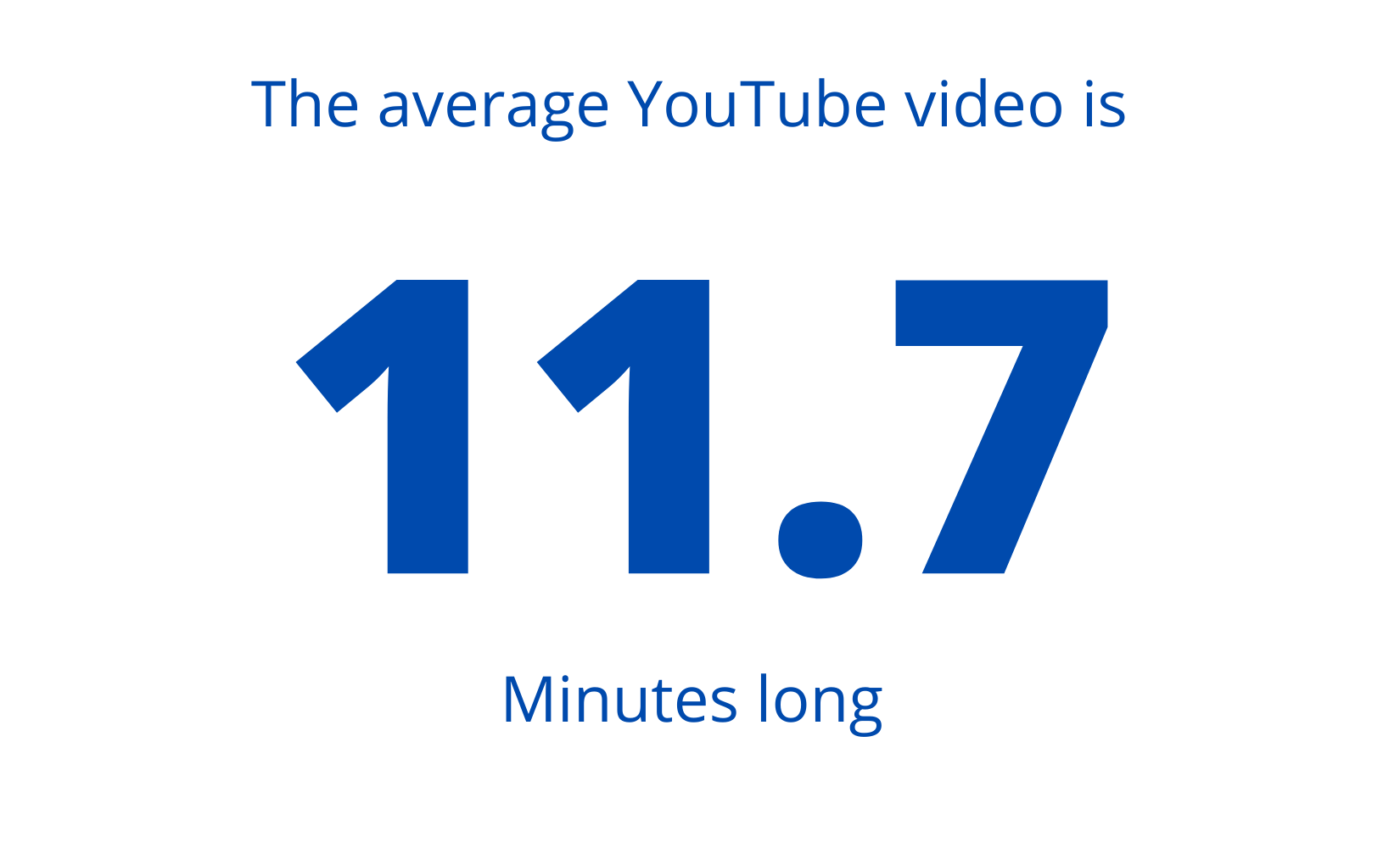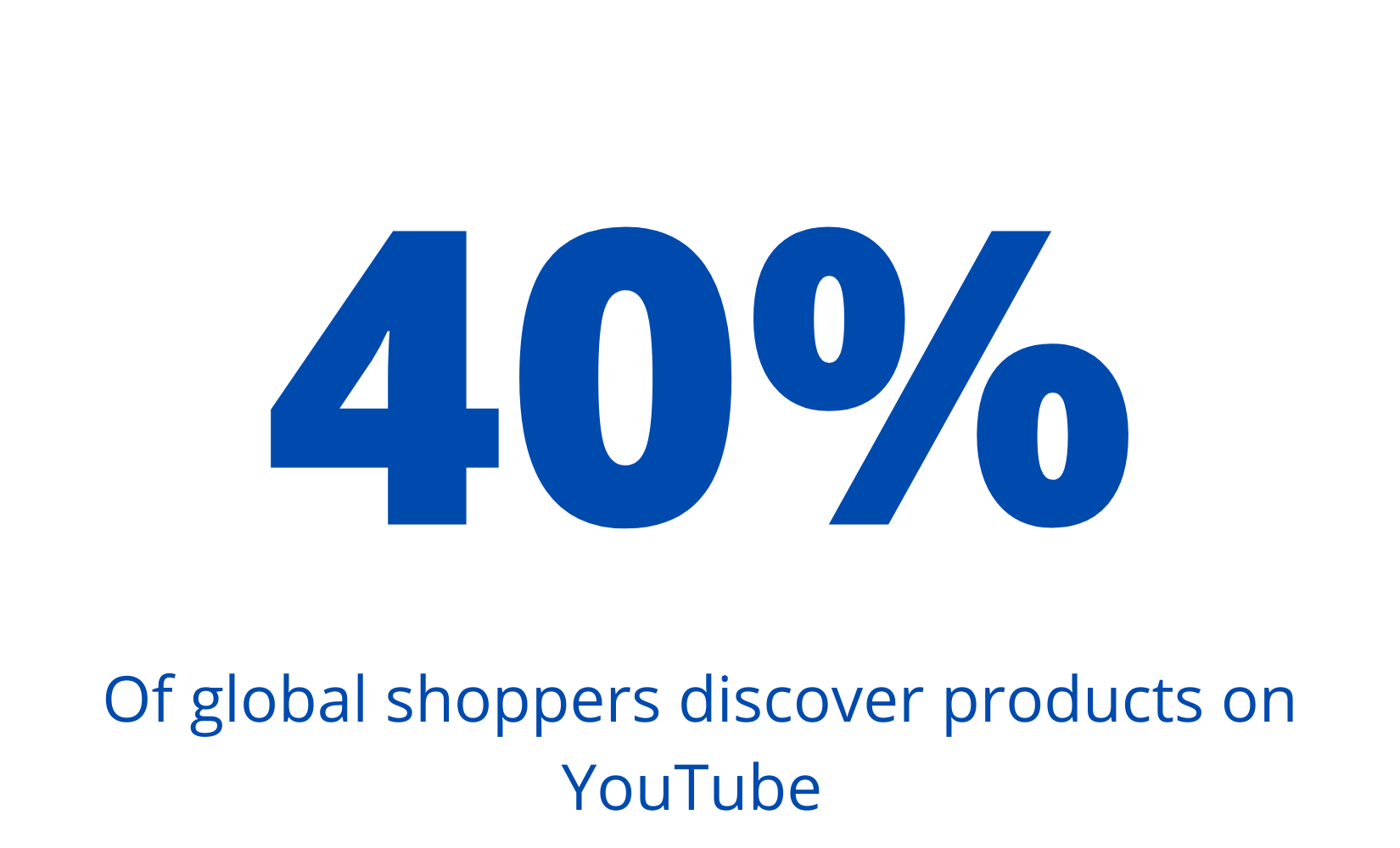While YouTube may be the place to be, there are a plethora of other businesses and brands already advertising on the platform. In order to stand out of the pack, you’ll need to pay close attention to certain crucial YouTube marketing statistics. They can help you build an effective marketing strategy for your business, if you leverage them correctly.
In this article, we’ll take a close look at some of the most interesting YouTube marketing statistics in 2020 and also consider how you can leverage them for the most profitable campaigns possible. Let’s get started!
YouTube marketing statistics
The 15–25 demographic is the most prominent
As revealed by a 2019 Statista report, more than 81% of internet users in the US within the 15–25 age range use YouTube actively. This was the highest figure recorded among studied age groups. The study also showed that the percentages kept reducing as the age brackets increased. For example, only 58% of internet users above 56 years of age use YouTube.
A key takeaway from this report is that your YouTube marketing strategy should have a strong focus on the 15–25 demographic. It may be true that you still have a considerable audience in older adults. However, if you want to achieve the best campaign results, it will be a smart move to optimize your content for viewers between 15 and 25.
There are a few proven strategies that work here. Some of them include using interactive content and short video ads (preferably 10 to 15 seconds in length). Even if your products or services are strictly targeted at users in other age groups, you should still optimize your content for the relevant demographics.
Viewers are open to discovering new products on YouTube
Though the majority of viewers do not watch YouTube videos with the intention of buying a product, they are still open to discovering a new product on the platform. In fact, over 90% of people who participated in a Google survey noted they discover new products and brands on YouTube.
Many YouTube users typically find a new product or service while watching a video, then search for the product online. This search often ends in a conversion – this is where native advertising comes in handy.
Native advertising is all about seamlessly integrating on-brand messages into regular YouTube content. So, instead of having a disruptive ad pop up on the viewer’s screen, native ads within informative brand content can do a better job getting their attention. For a real world example, consider the “Sponsored by…” sections of many YouTube videos.
Most of what people watch on YouTube is decided by the recommendation algorithm
At CES 2018, YouTube’s Chief Product Officer Neal Mohan revealed that more than 70% of viewed videos were recommended by the platform itself. YouTube’s Artificial Intelligence (AI) – known as Google Brain – is becoming more and more sophisticated. As a result, it now does a good job of displaying similar videos to those you’ve watched in the past.
There’s really no specific hack or shortcut to beating the recommendation algorithm. In essence, Google’s AI consistently prioritizes high-quality content with a high level of engagement. Of course, you can use certain tips and techniques to improve your content’s performance.
The takeaway here is that each time you post a new video on YouTube, make sure to put the right keywords into your metadata and title. These factors go a long way in determining how the algorithm ranks your videos.
Most YouTube users view content on mobile devices
Based on data collected by YouTube, more than 70% of YouTube watch time comes from mobile devices. This percentage has remained consistent for quite a while now. Therefore, it doesn’t come as a surprise that the YouTube app was the most downloaded iOS app in 2019 for the second year in a row.
This statistic shows the necessity of creating your content with mobile viewers in mind. Though you’ll most probably be editing your content on a non-mobile device, you must still be on the lookout for mobile compatibility.
You can optimize your videos for mobile devices in different ways. One solution is to add captions. They can help you catch the attention of mobile users who are on the go, or otherwise not at their desktop computer or smart TV.
The average length of YouTube videos is nearly 12 minutes


In July 2019, Statista compiled a report on YouTube videos based on their length in minutes. The report showed that the overall average length of YouTube videos is 11.7 minutes. This gives us an idea of what your own videos should strive to be length-wise. However, the optimal length of your video will come down to what category your content falls into.
The category with the longest video length was gaming, with 24.7 minutes on average. On the other hand, videos in the music category came in at the bottom of the list with an average length of 6.8 minutes. So, if you’re not in the music industry, you may want to favor video lengths above 5 minutes.
In fact, studies show that YouTube videos are getting longer by the day. This is all thanks to YouTube’s ad revenue system that rewards creators with longer watch time.
More viewers are following and engaging with content creators
YouTube creators have enjoyed a great deal of success in recent years. According to Google, 70% more users are following content creators and engaging with their channels. This means you can now easily reach your target audience by serving them ads through the creators they already love.
Collaborating with YouTube creators is an efficient means of appealing to an engaged audience. This is why influencer marketing is consistently becoming more appealing. In order to enjoy the best results from a brand-influencer partnership, you have to agree on your campaign expectations and Key Performance Indicators (KPIs) upfront.
YouTube is generating more revenue from ads every year
YouTube’s global advertising revenues keep increasing by as much as 33.5% annually. In 2019 alone, the video platform generated approximately $15 billion. This is a considerable upgrade from the $11 billion racked up in the fiscal year of 2018.
When compared with the revenue generated by Google’s search segment, YouTube seems to be miles behind. Google Search reported global annual revenue of $98 billion in 2019 alone. Nonetheless, YouTube ads still remain a significant money-maker, especially considering the noteworthy growth rate.
As such, it’s clear that advertising on YouTube isn’t going out of style soon — at least judging by its profitability.
Online shoppers are getting purchase inspiration from YouTube


Younger adults are shopping more and more online. They also rely on YouTube to make their purchase decisions. In a survey by Google, more than 50% of shoppers from around the world agreed that online videos have helped them choose which specific product or brand to buy.
Another study revealed that a significant 40% of global shoppers discovered the products they purchased on YouTube first. So, viewers not only discover new products on YouTube, they also use the platform to actively make their purchase decisions.
One of the categories heavily impacted by this trend is the smartphone industry. In fact, about 90% of smartphone users aren’t sure which particular brand they intend to buy until they start shopping online. In other words, if you’re in the smartphone or tech industries, spending a good portion of your marketing budget on YouTube could be wise.
More than half of marketers are running YouTube video ads
As of 2019, 51% of online marketers run video ads on YouTube. 62% of these marketers also revealed that they intend to increase their YouTube ad budget in the coming year. This tells us that YouTube marketers are satisfied with the Return On Investment (ROI) from their campaigns.
There are many factors responsible for such a large share here. The most important appears to be YouTube’s enormous reach. With a billion viewers and several billions of viewing hours every month, missing out on the opportunity to reach new customers is not an option.
YouTube Analytics also makes a strong argument for the platform. Being able to track your ad metrics easily helps you make the best of your advertising budget.
The most popular YouTube videos are not in English
Based on Pew Research Center’s findings from a 2019 study, only about 33% of the content uploaded by popular YouTube channels are in English. However, this figure was only from the first week of 2019. Over a longer period, it was discovered that only a meager 17% were completely in English.
It is clear that creating content in different languages other than English will help you reach a larger audience. The statistics above reveal how much non-English content can further improve your YouTube ad’s performance.
Also, YouTube now has local versions in more than 100 countries and supports about 80 languages. You can take advantage of this development to optimize your content for several local audiences.
Conclusion
Harnessing the power of YouTube for advertising is a must-do for every marketer in 2020. However, you can only fully maximize the channel when you leverage key YouTube marketing statistics.
The latest trends reveal that YouTube is becoming increasingly popular among younger adults. This explains why more marketers are running ads on the video platform. With the knowledge of the statistics in this piece, you also can begin to employ the channel to your business’s advantage.
Is YouTube a pressing concern marketing-wise for you? Will these YouTube marketing statistics change your approach? Tell us your thoughts in the comments section below!
The post 10 YouTube Marketing Statistics Every Marketer Should Know in 2020 appeared first on Revive Social.
